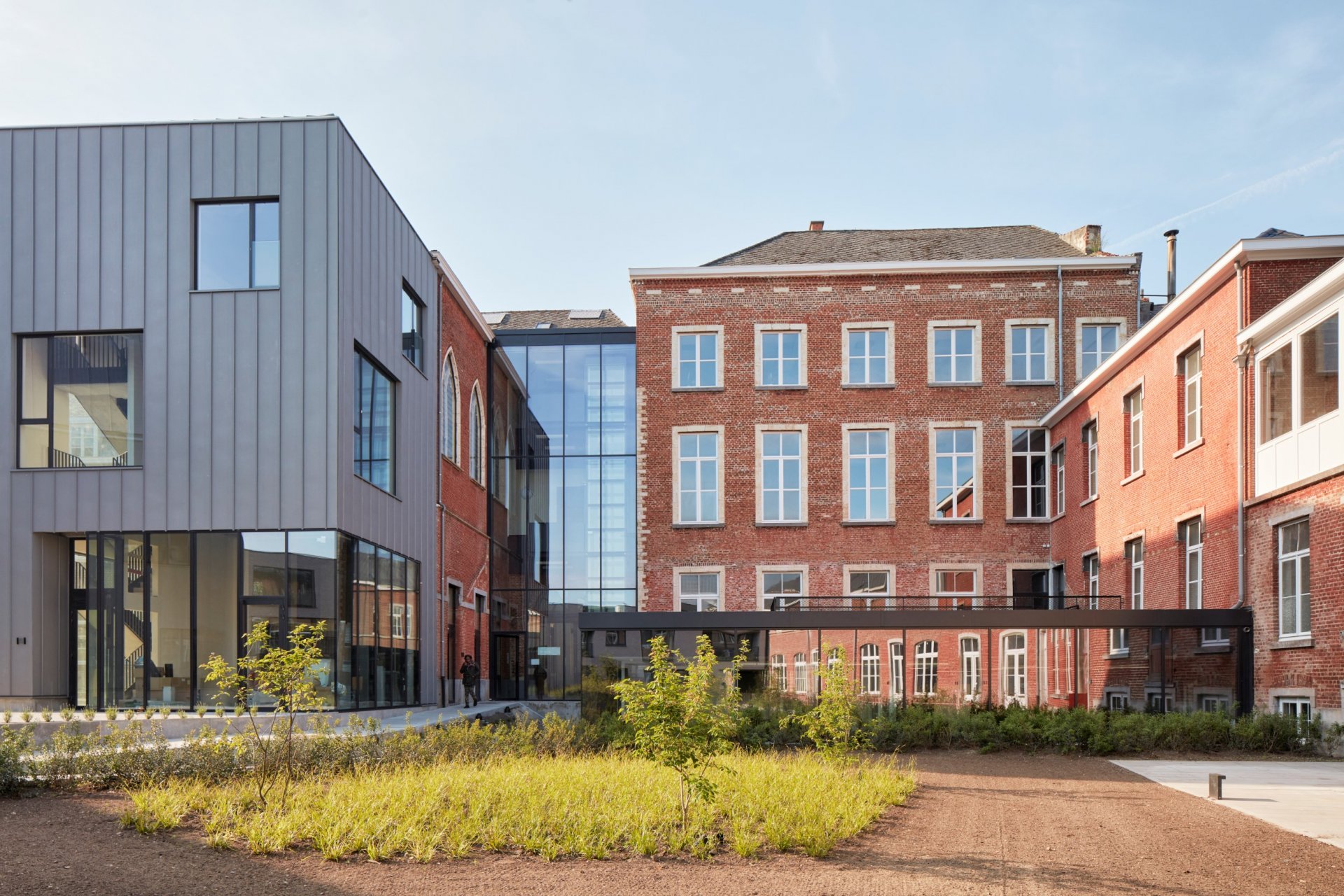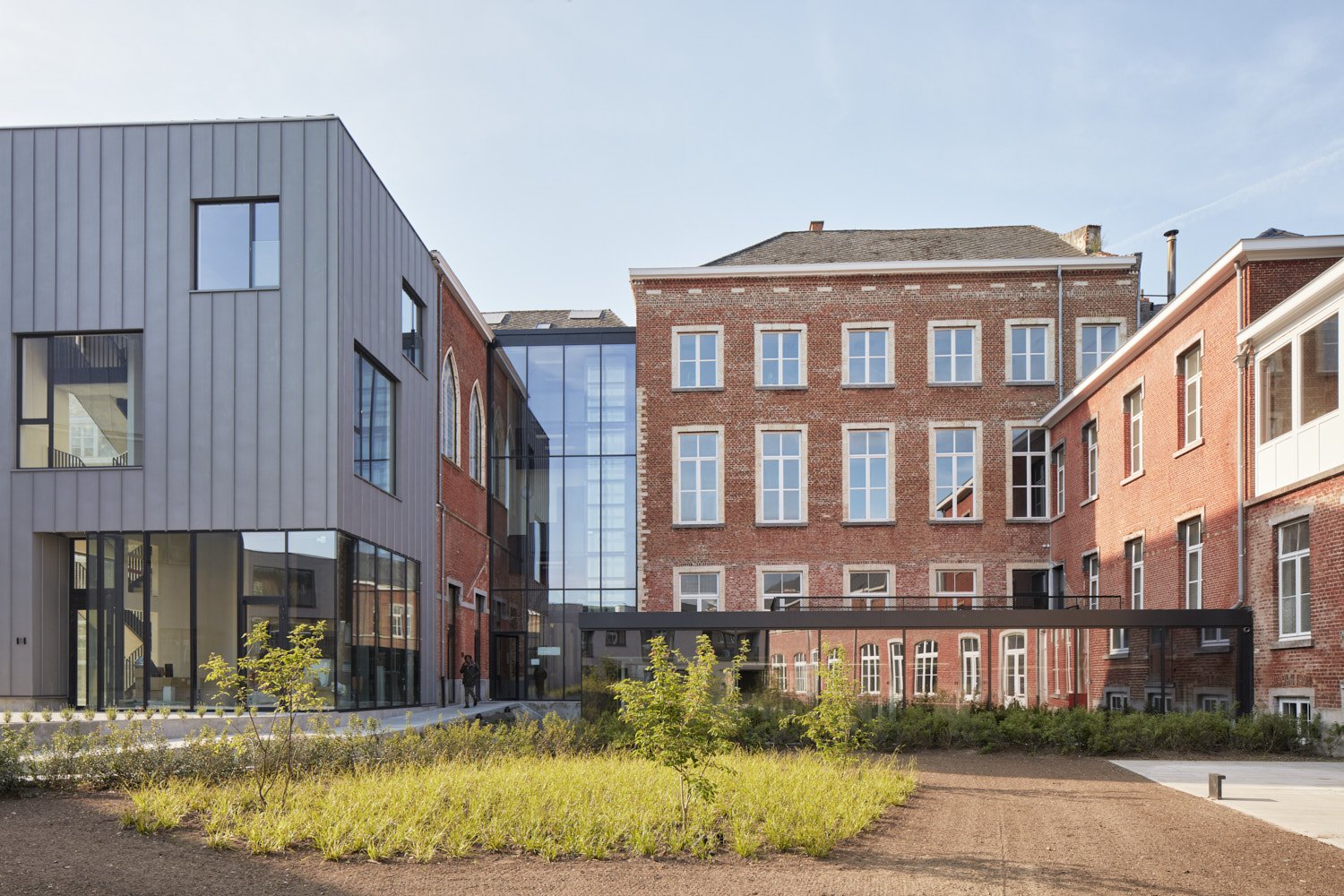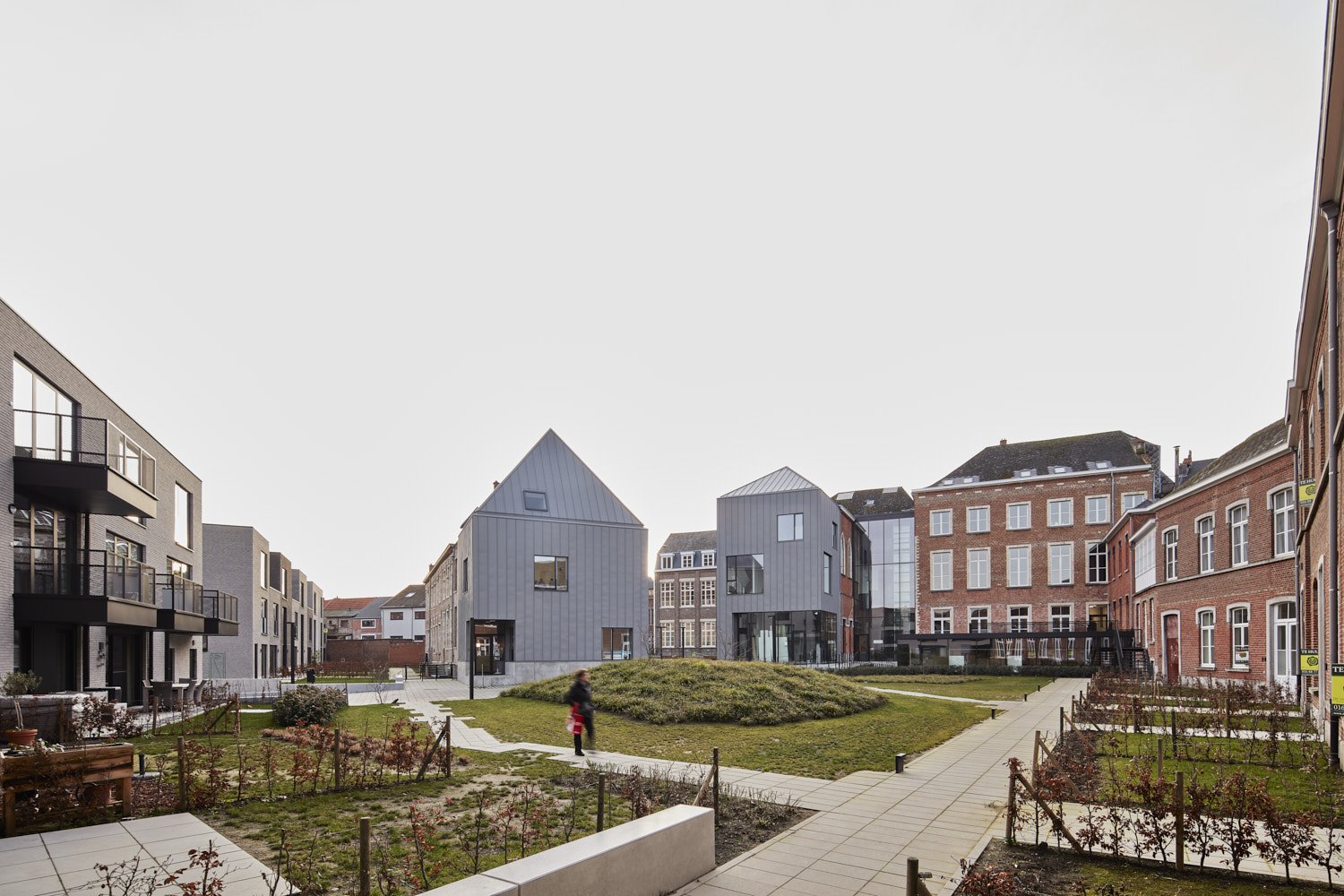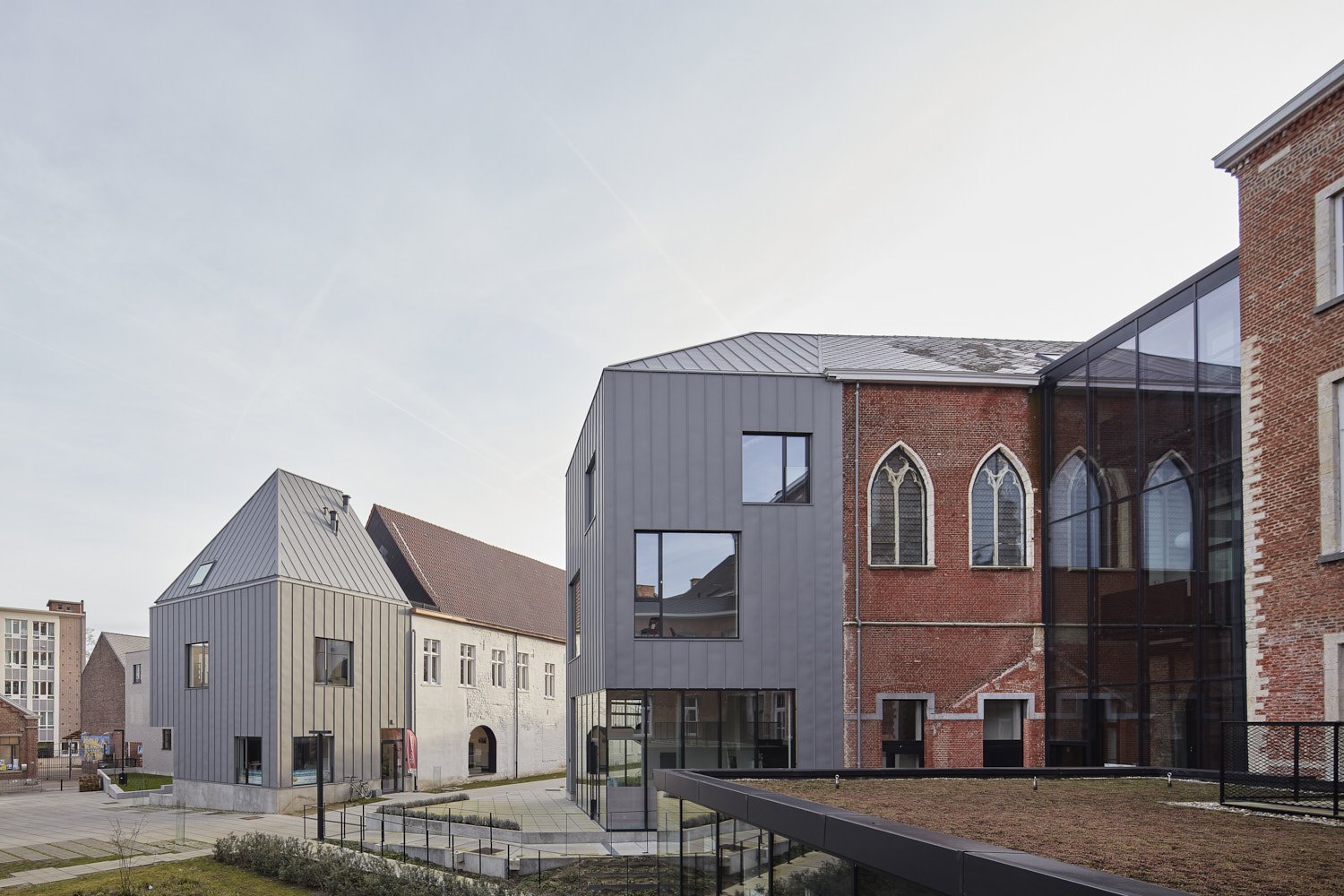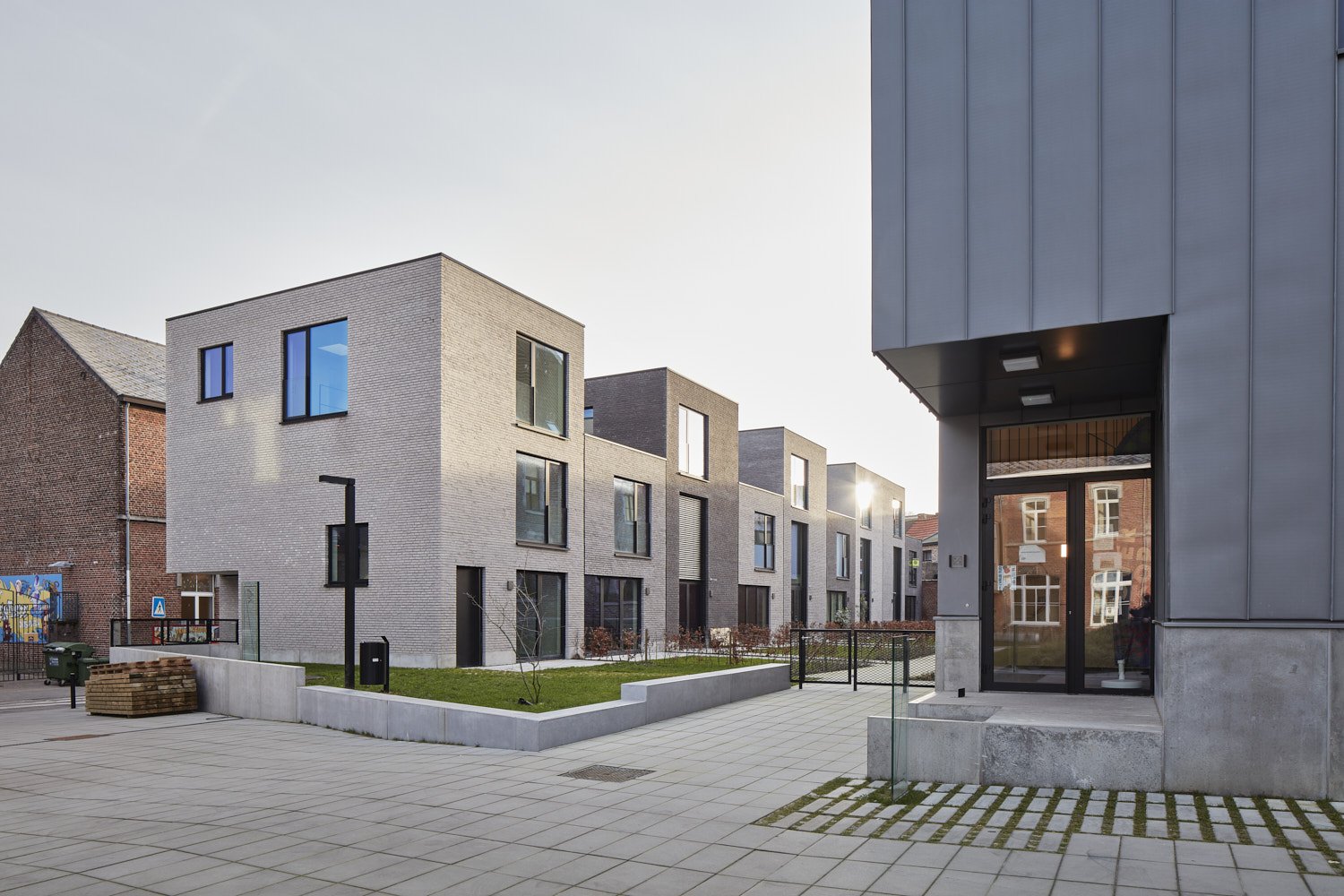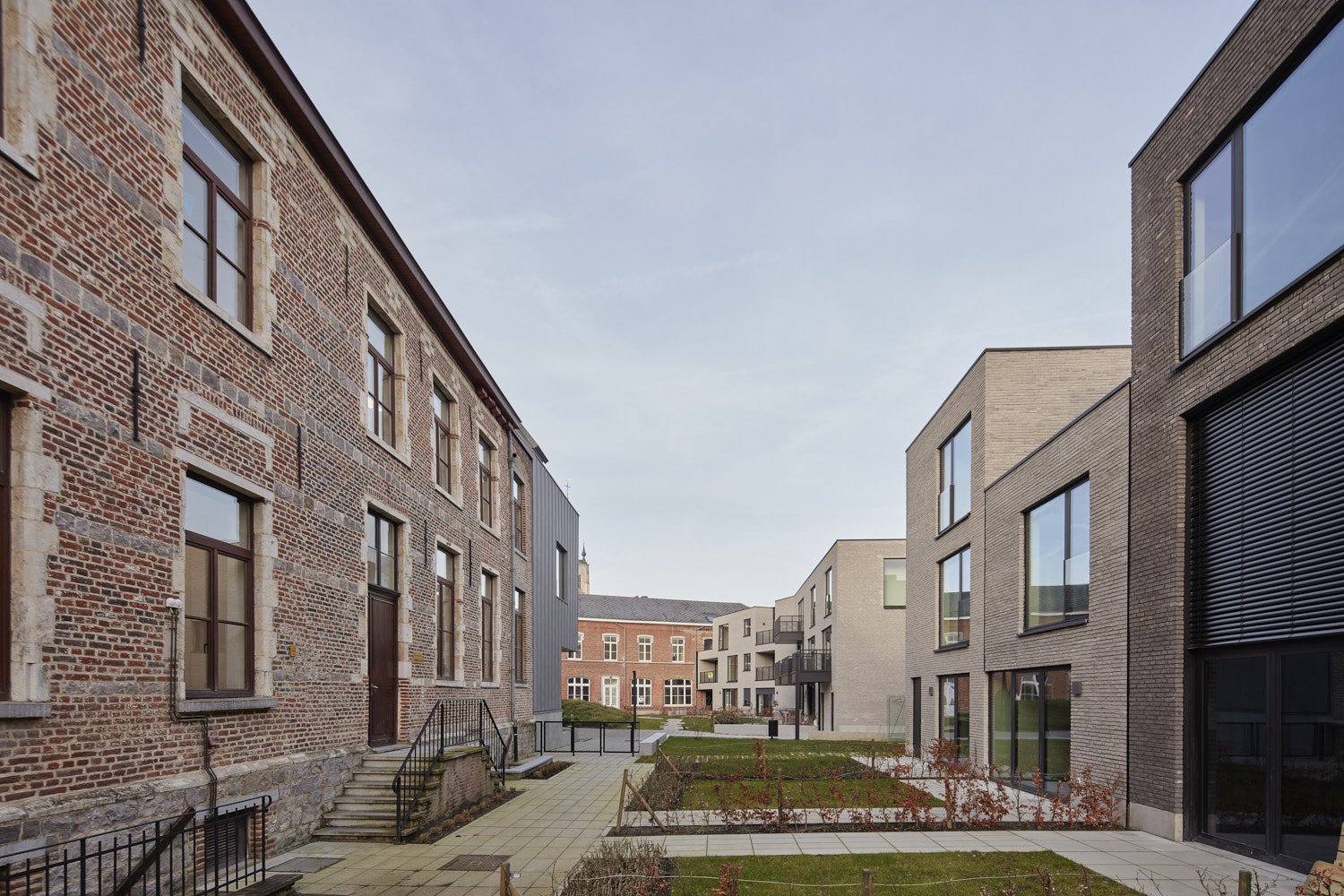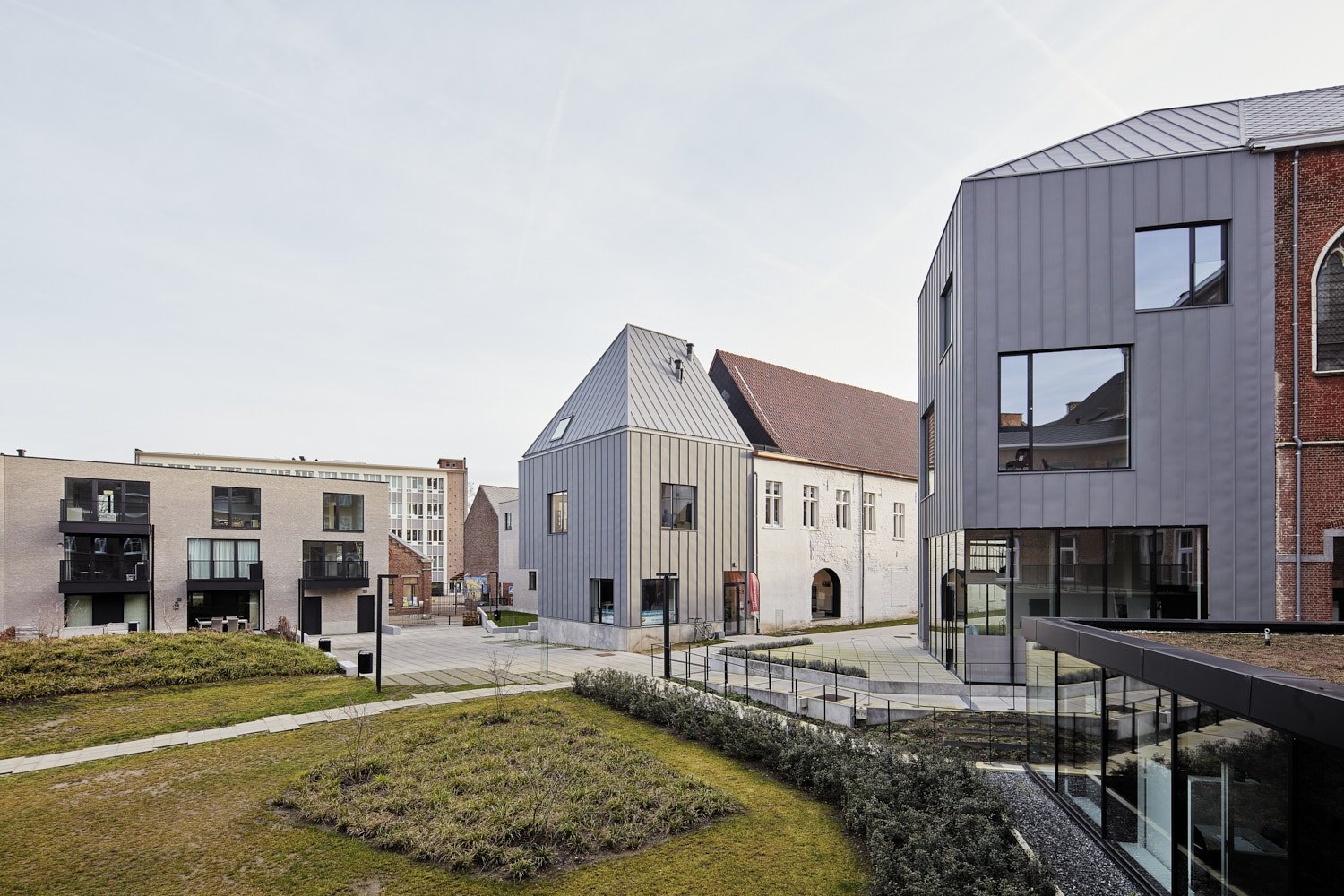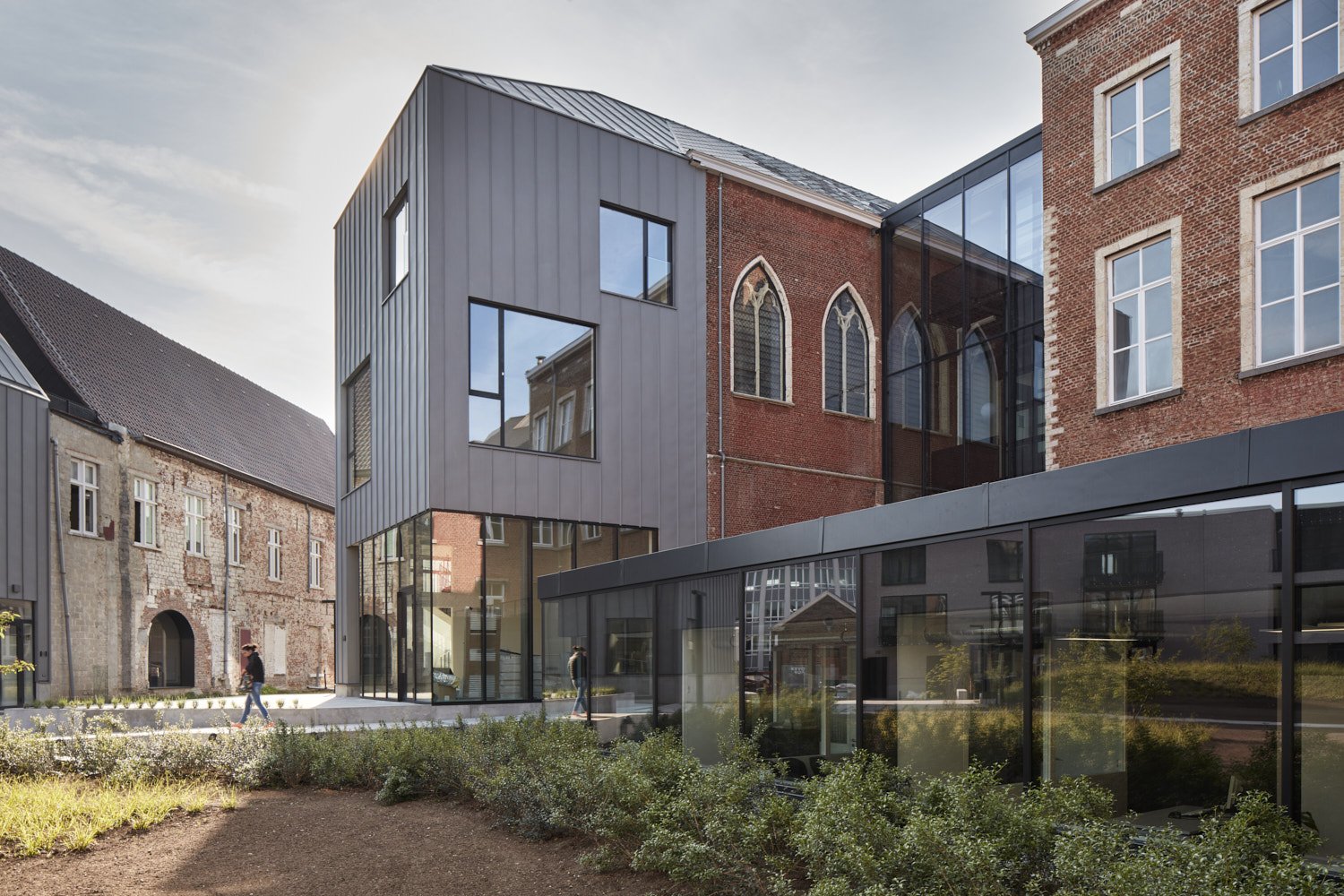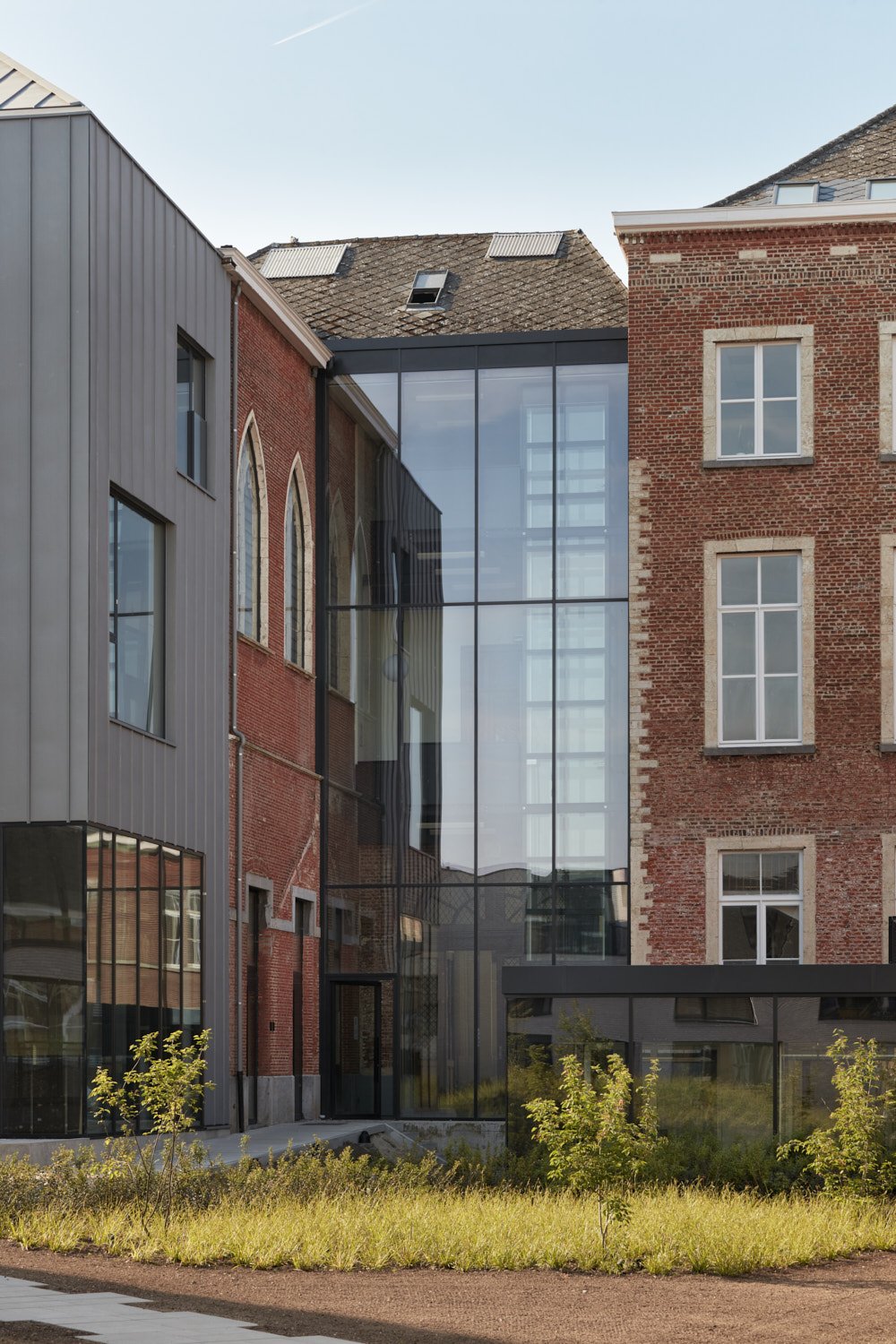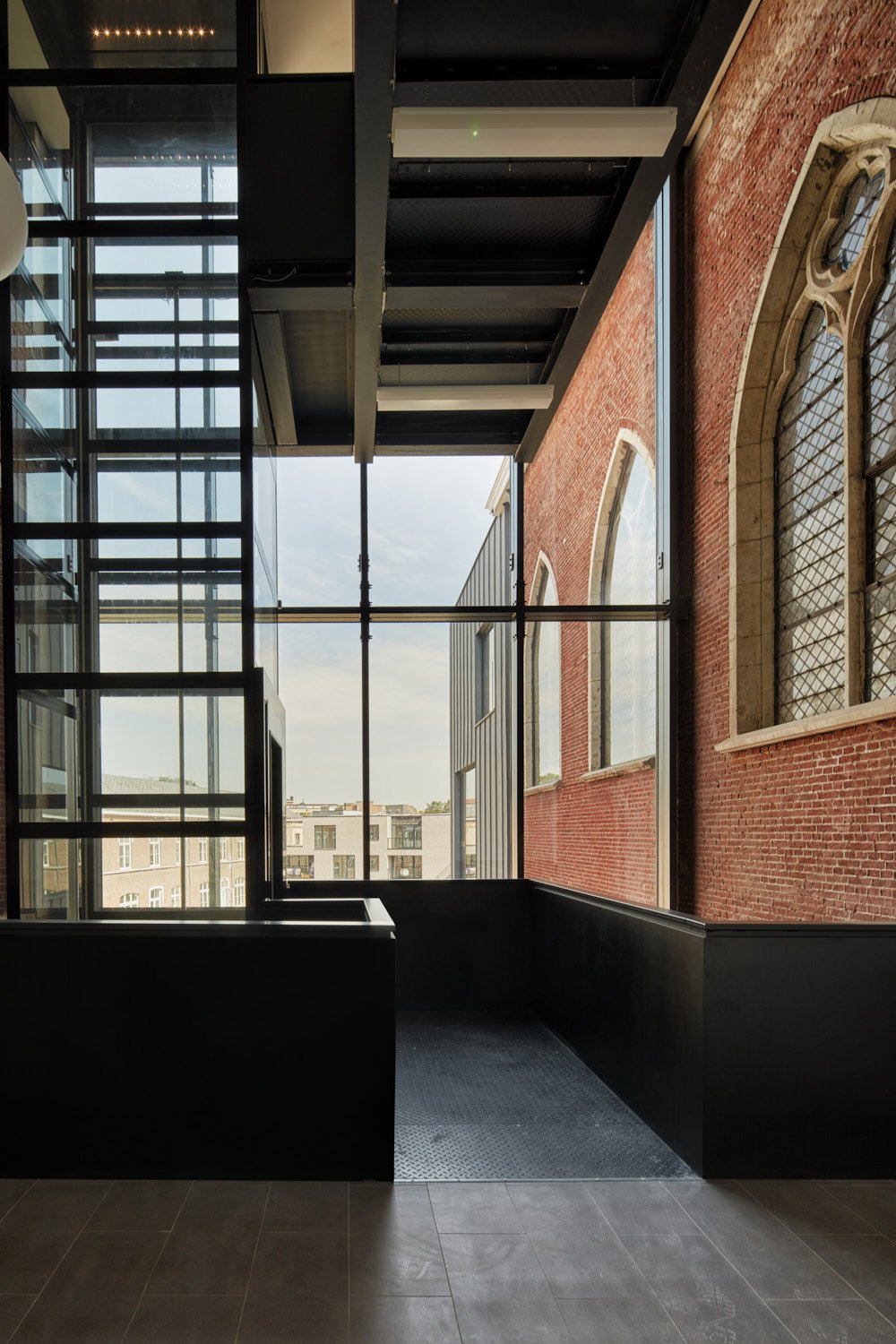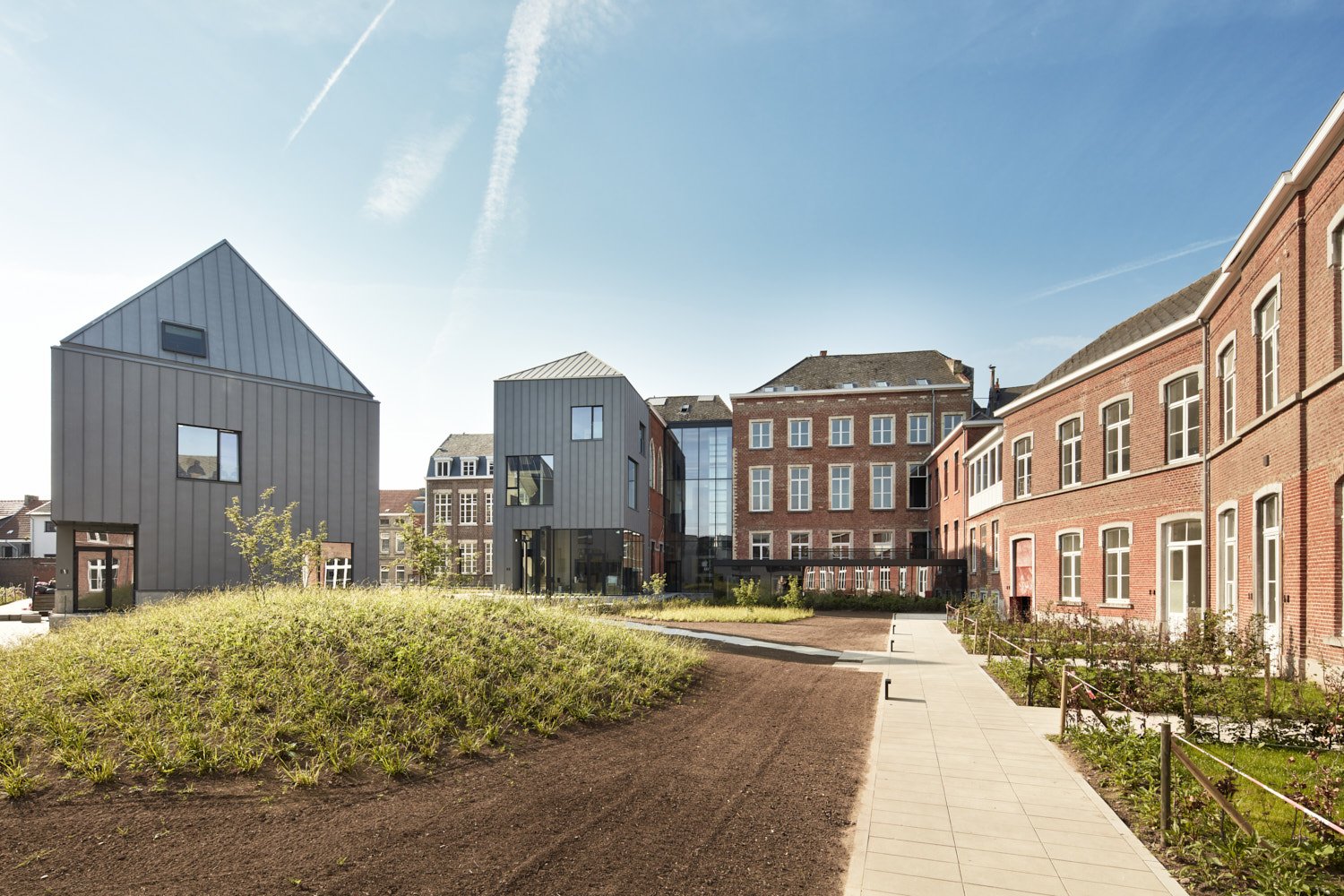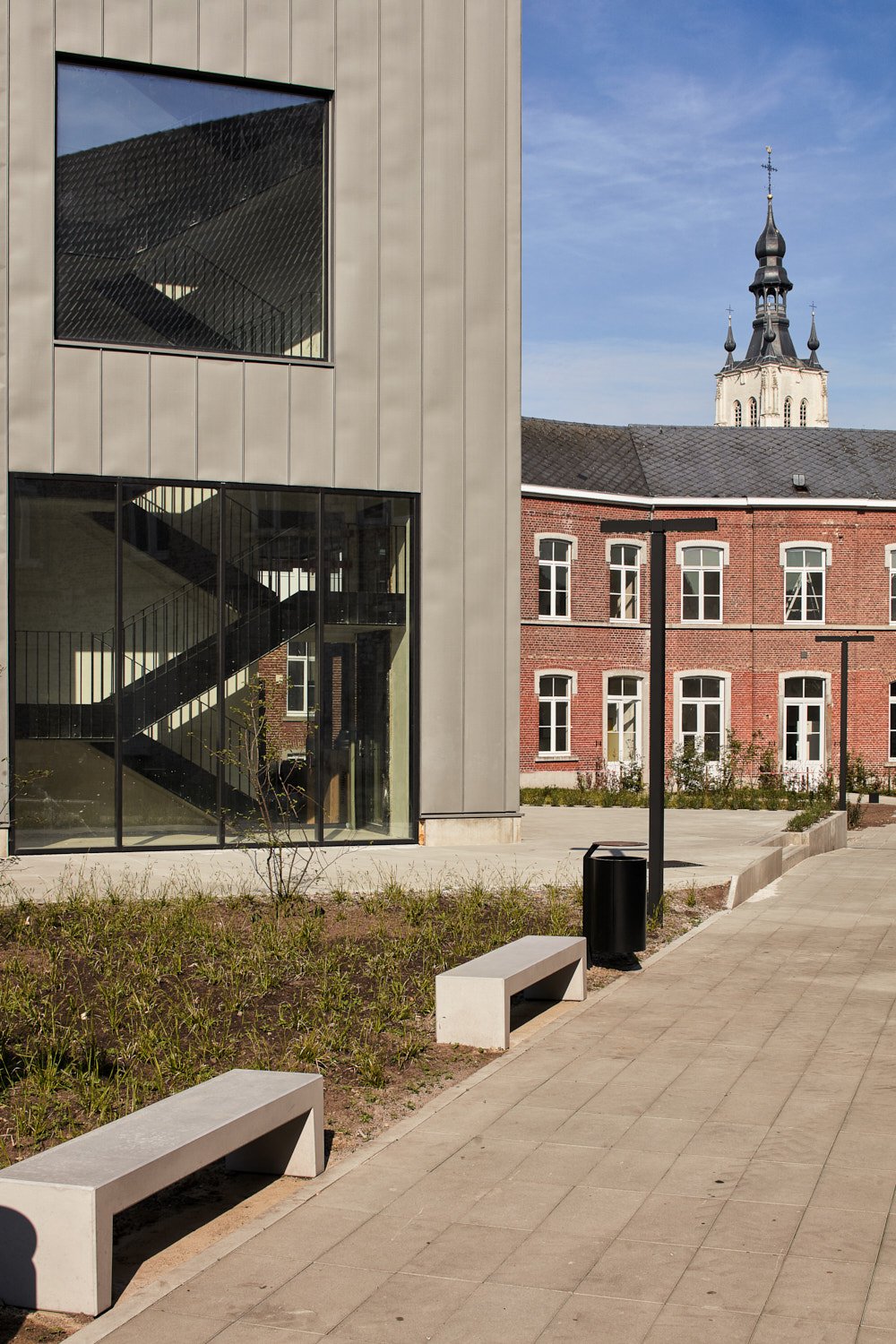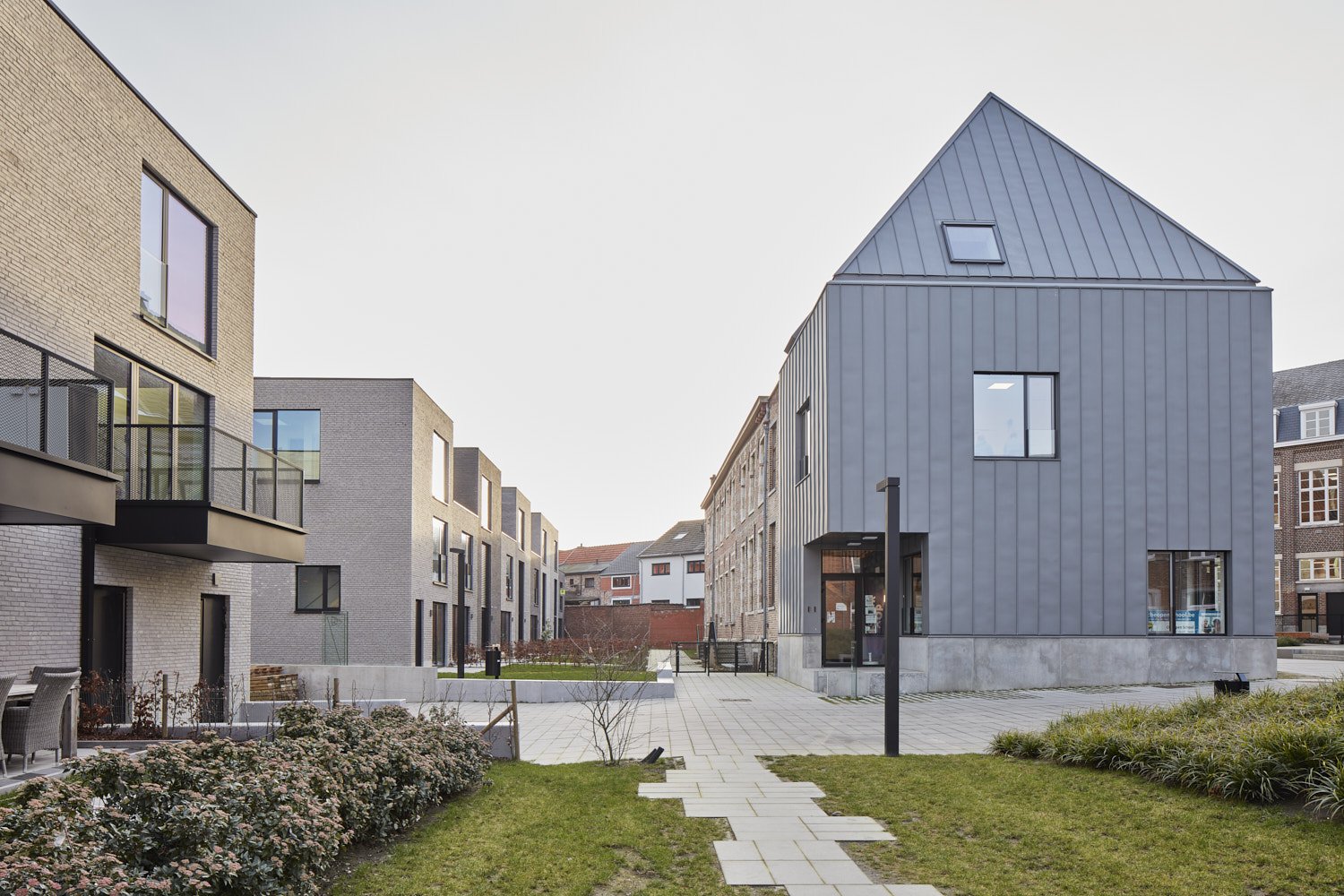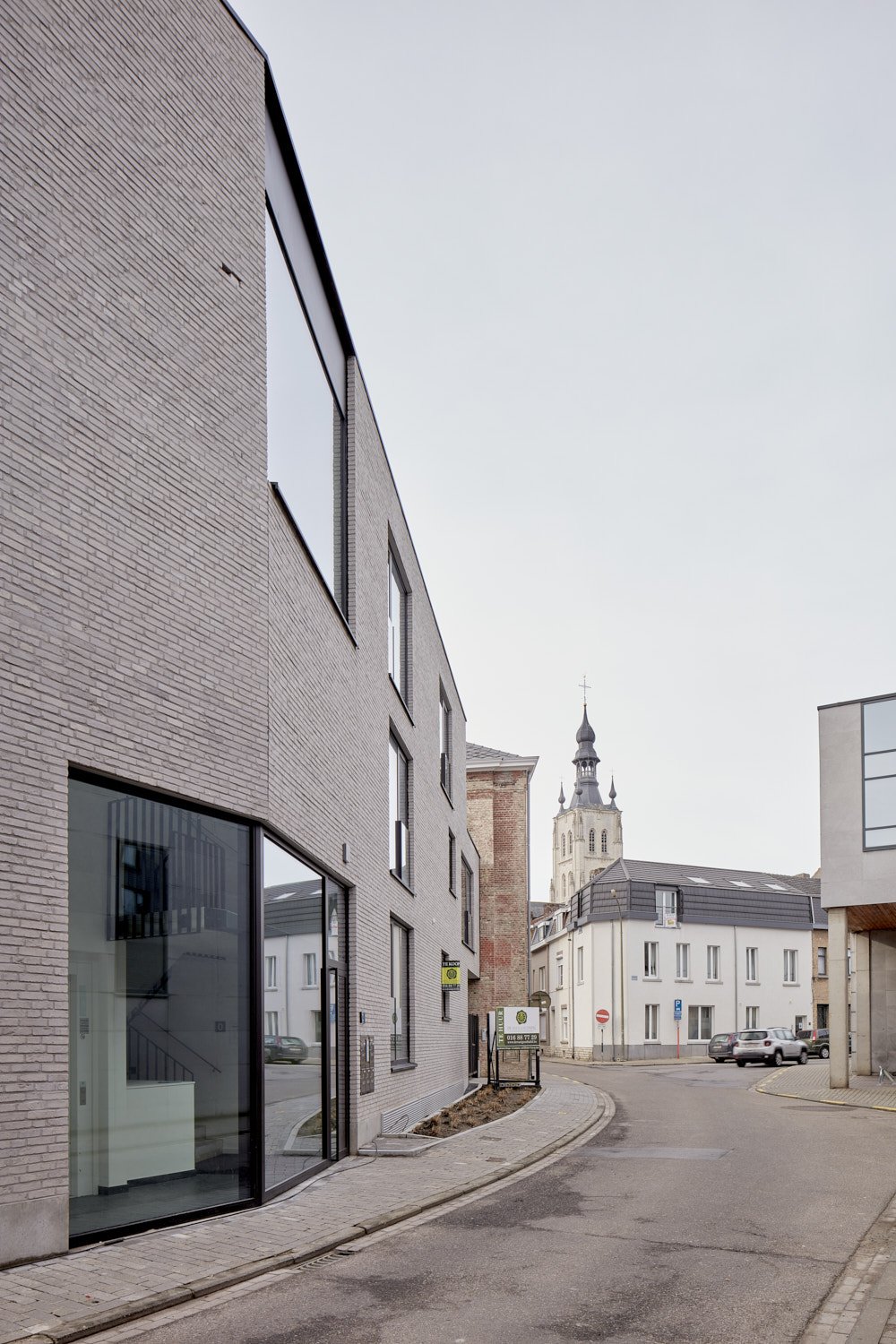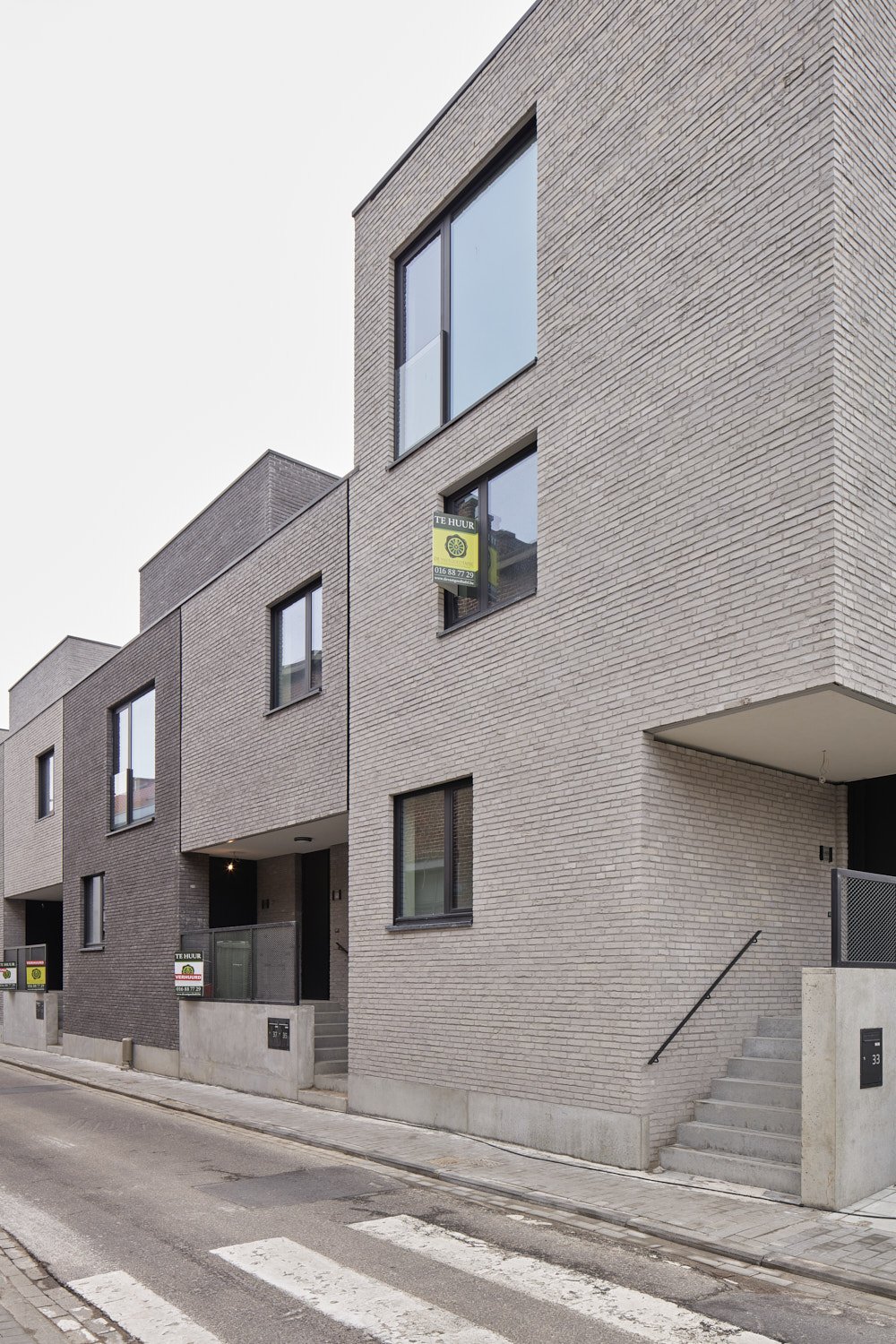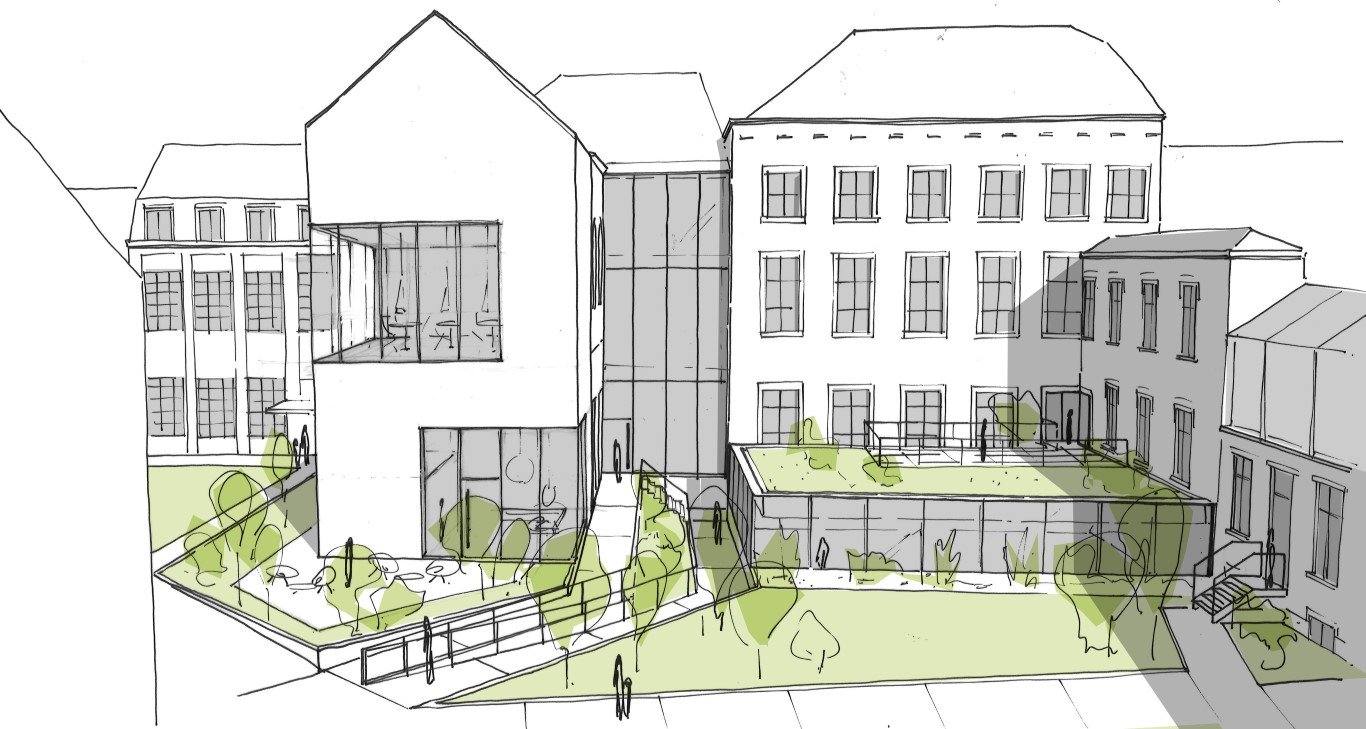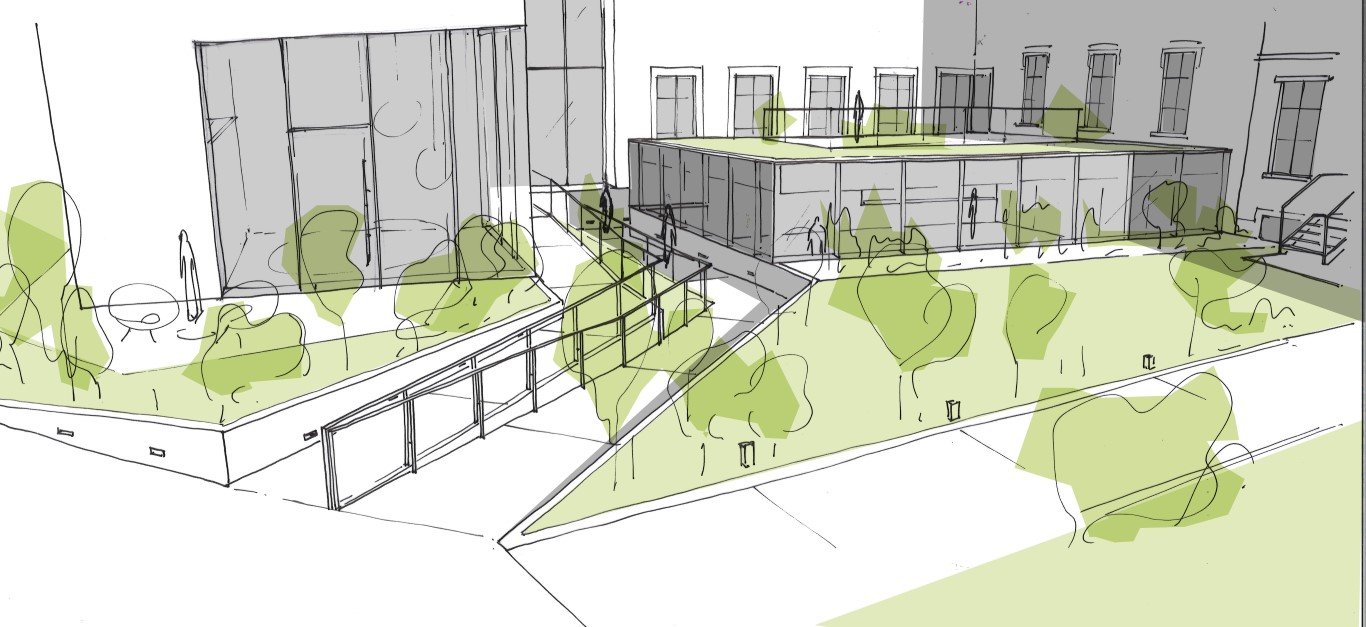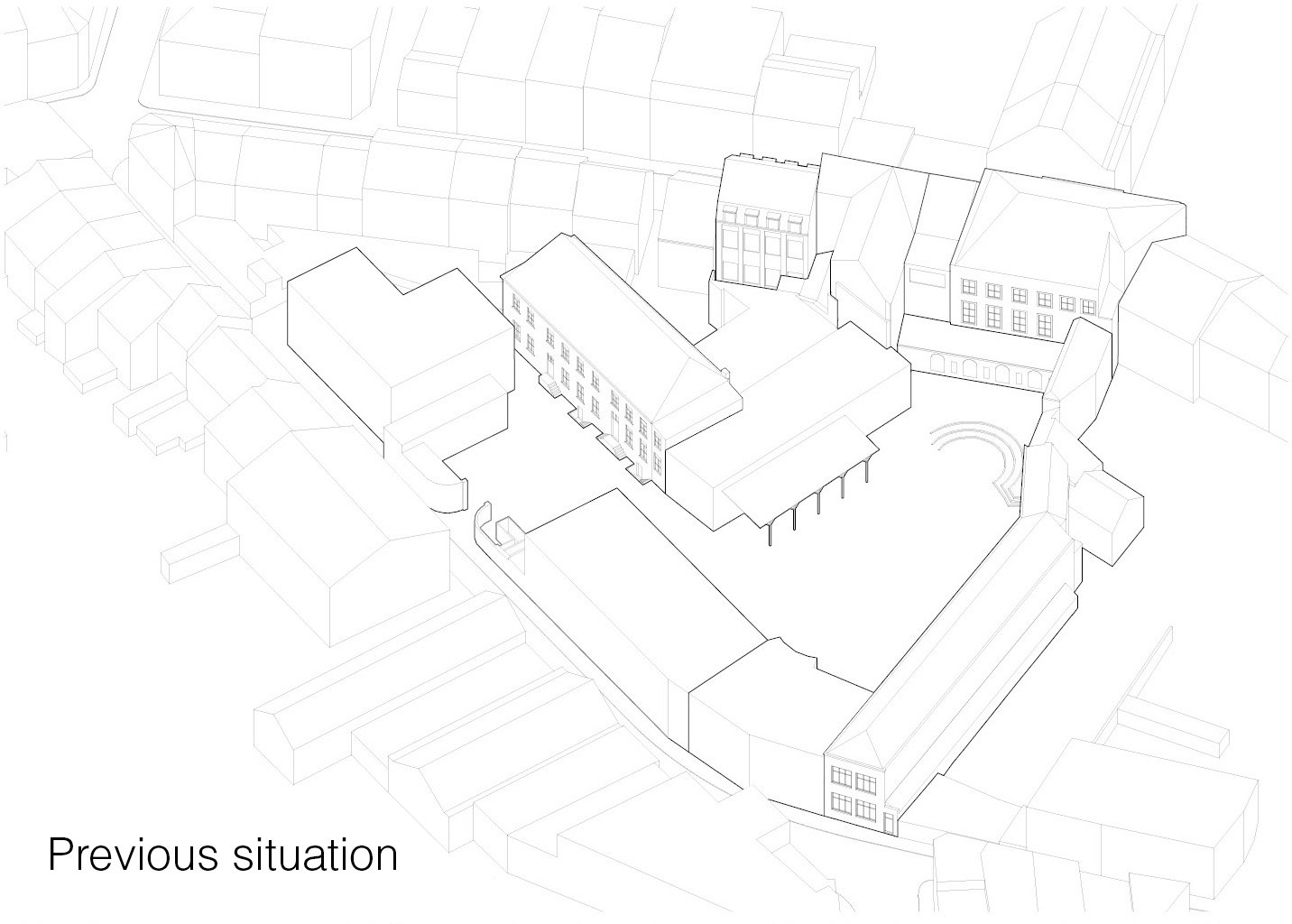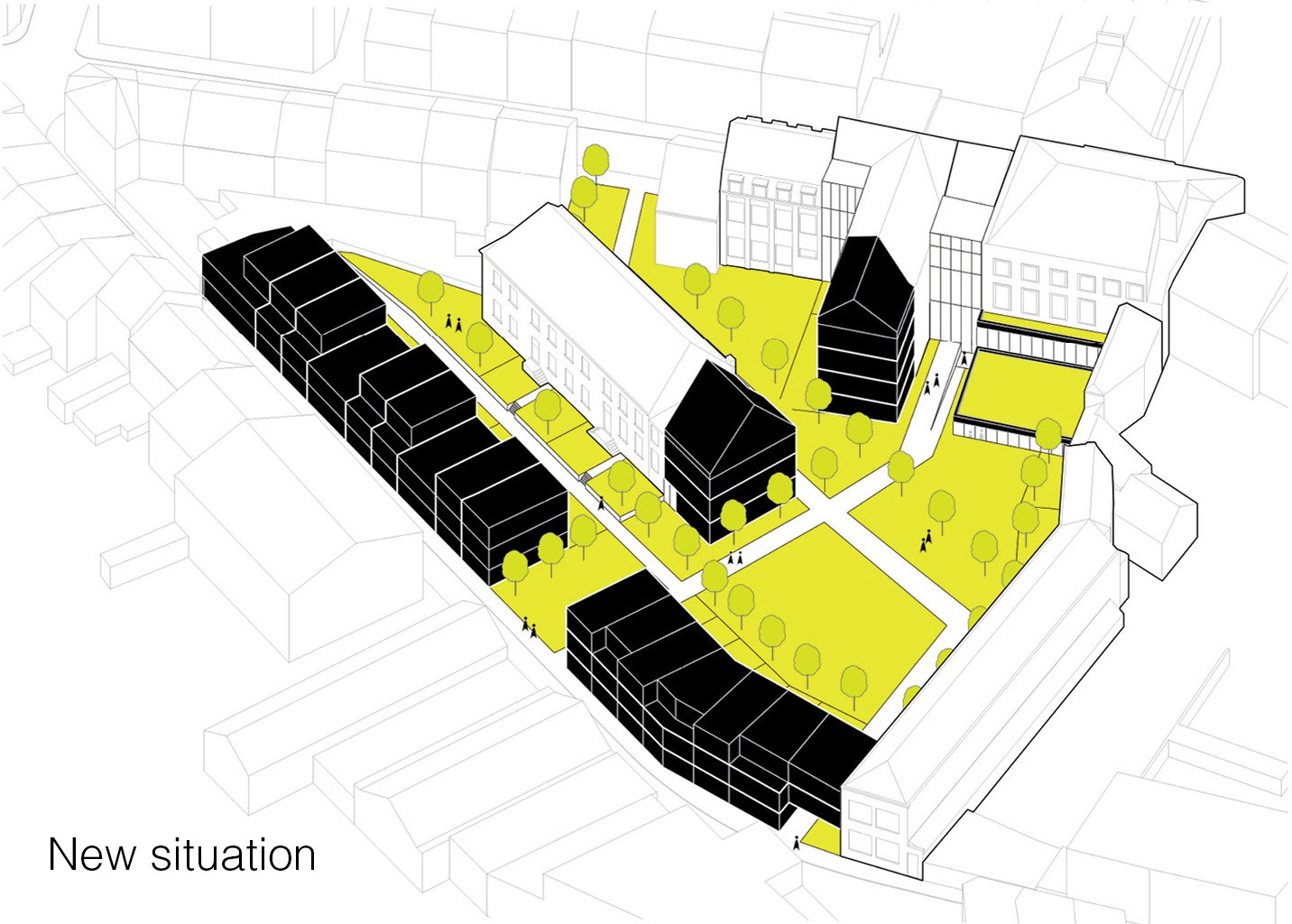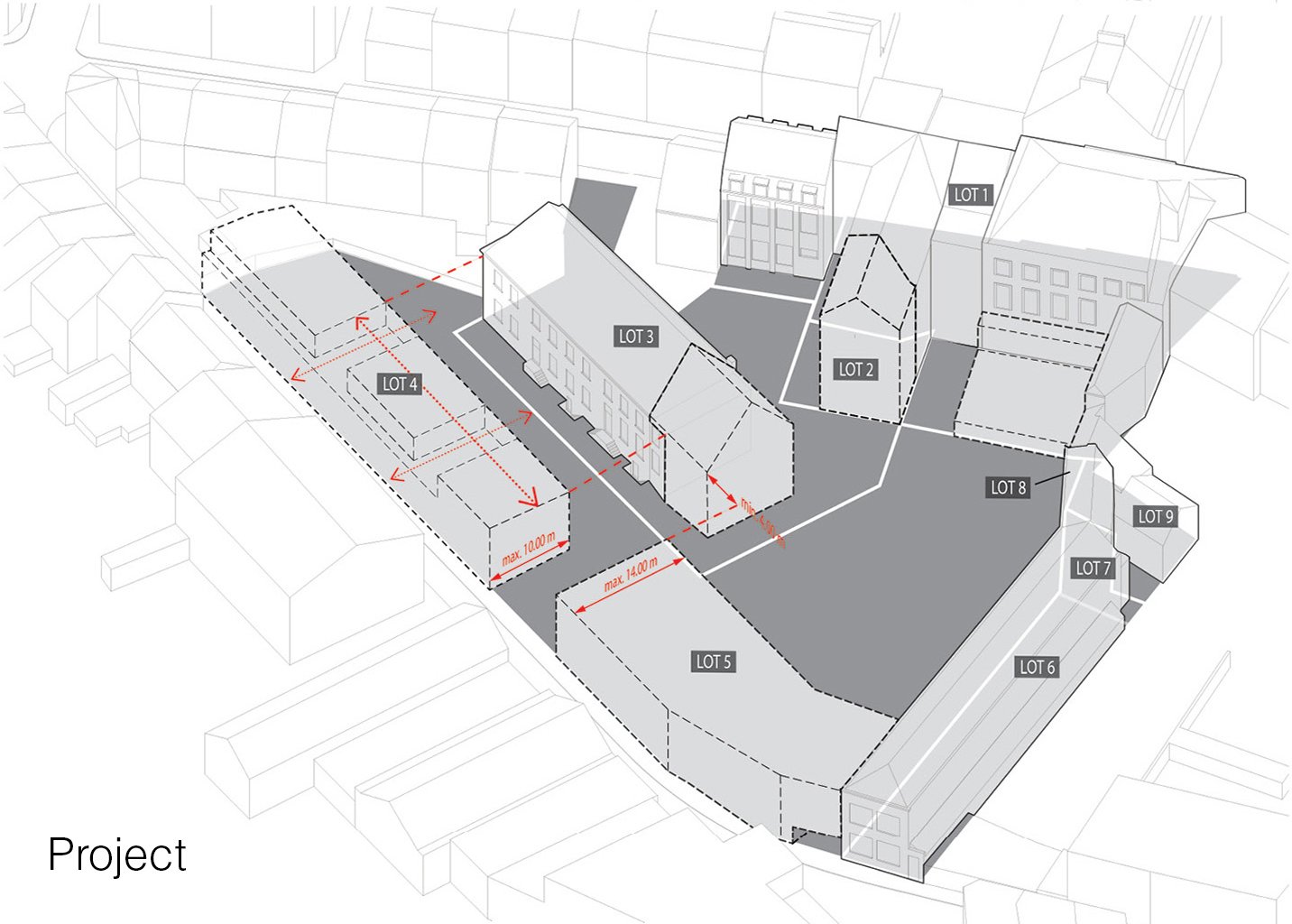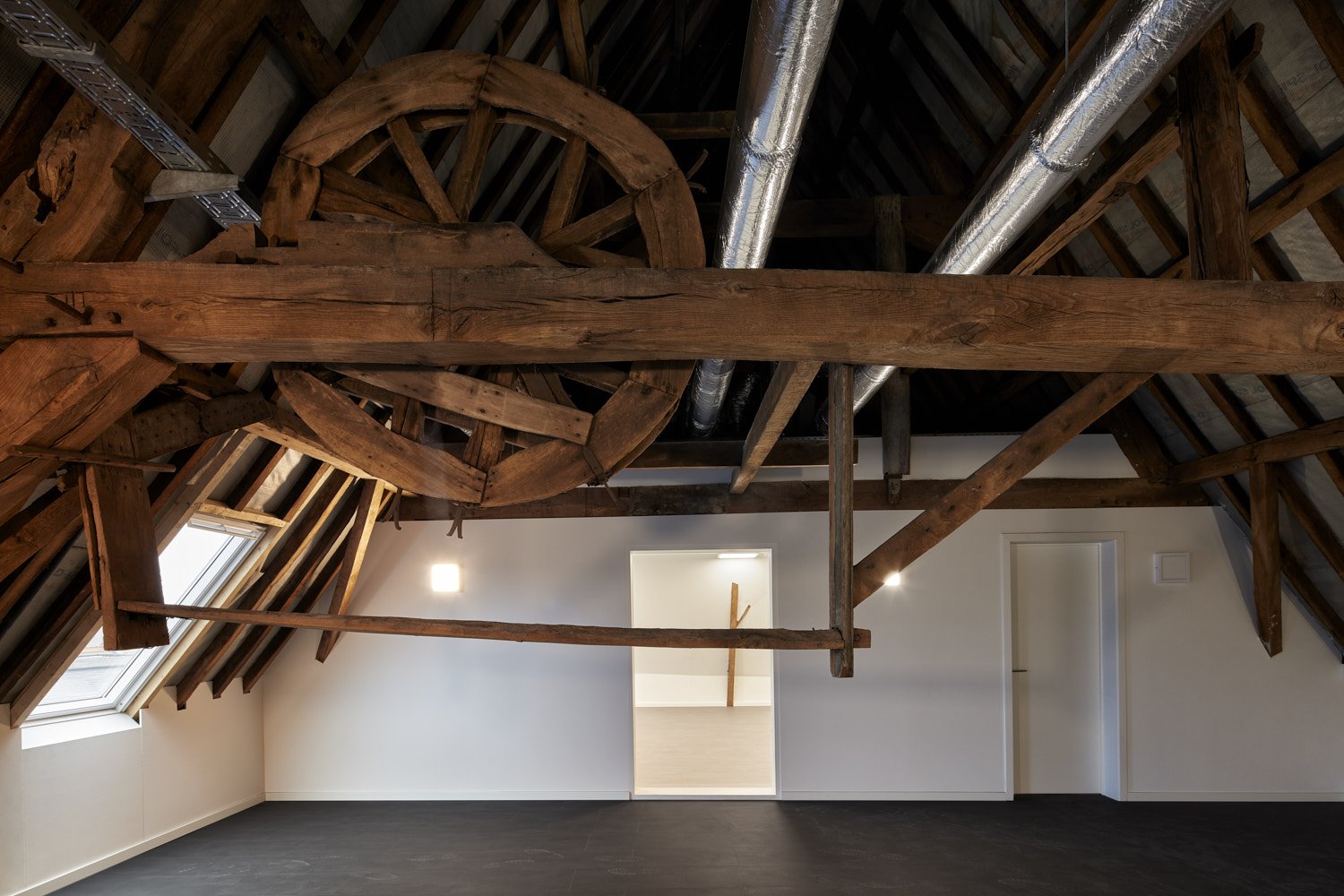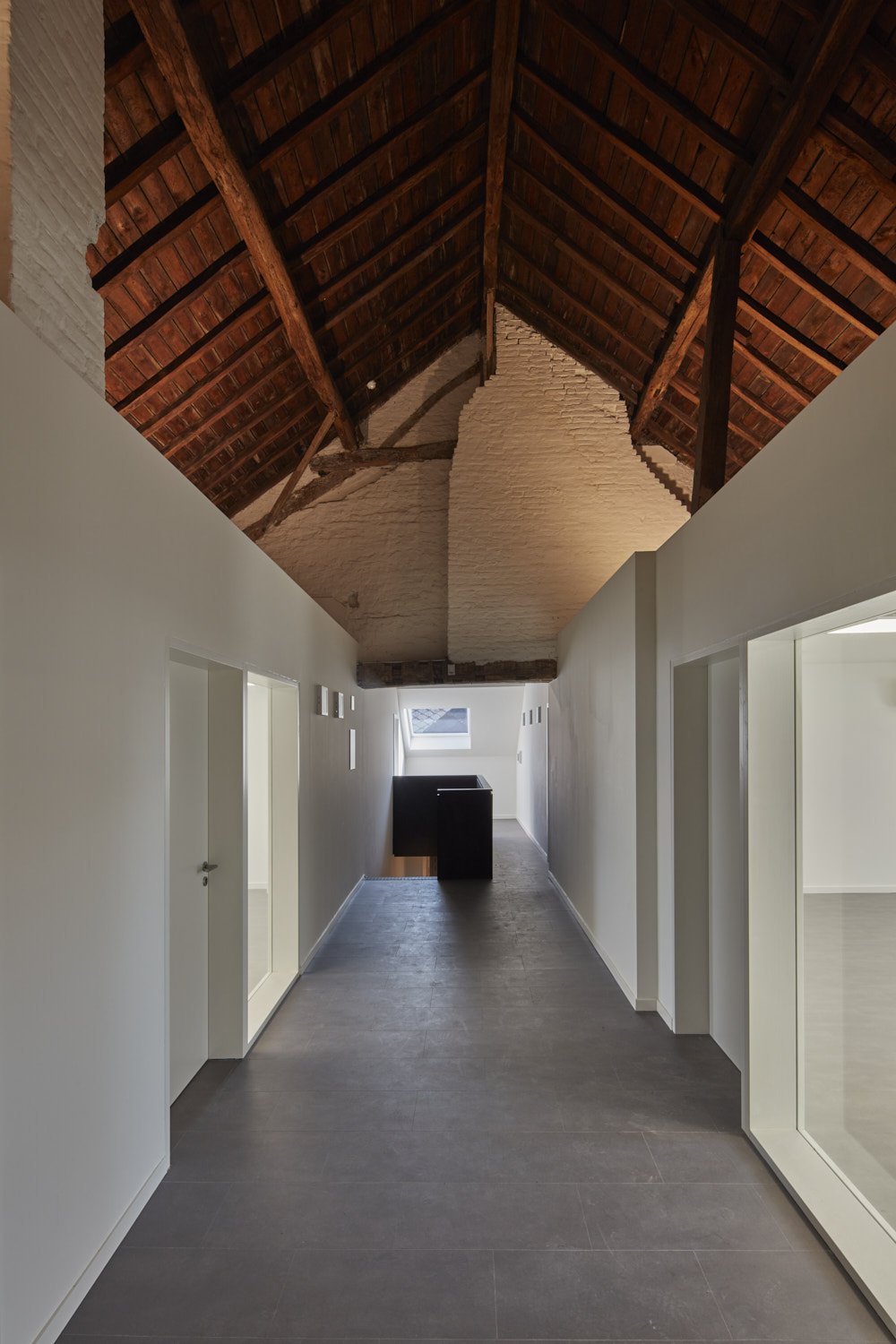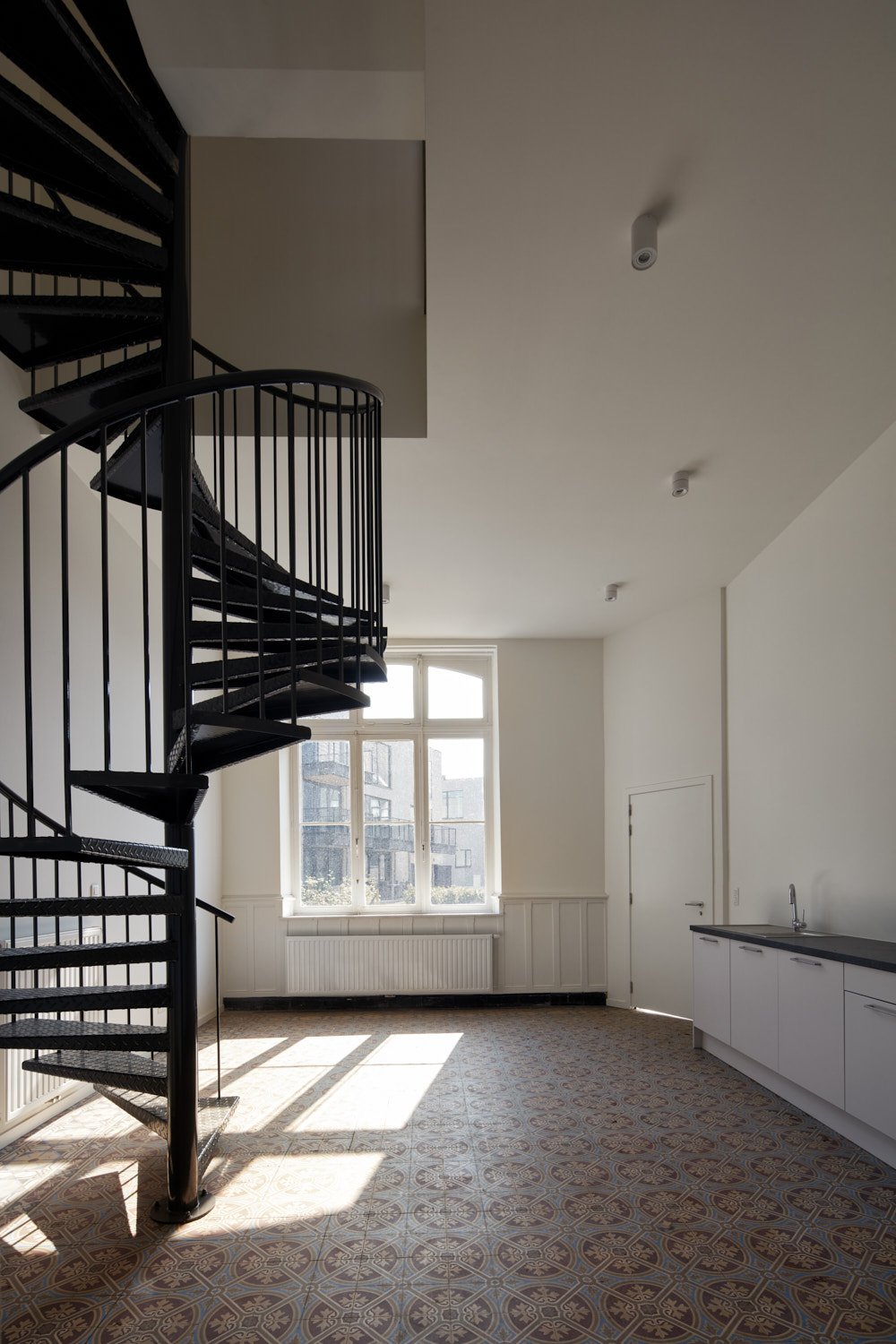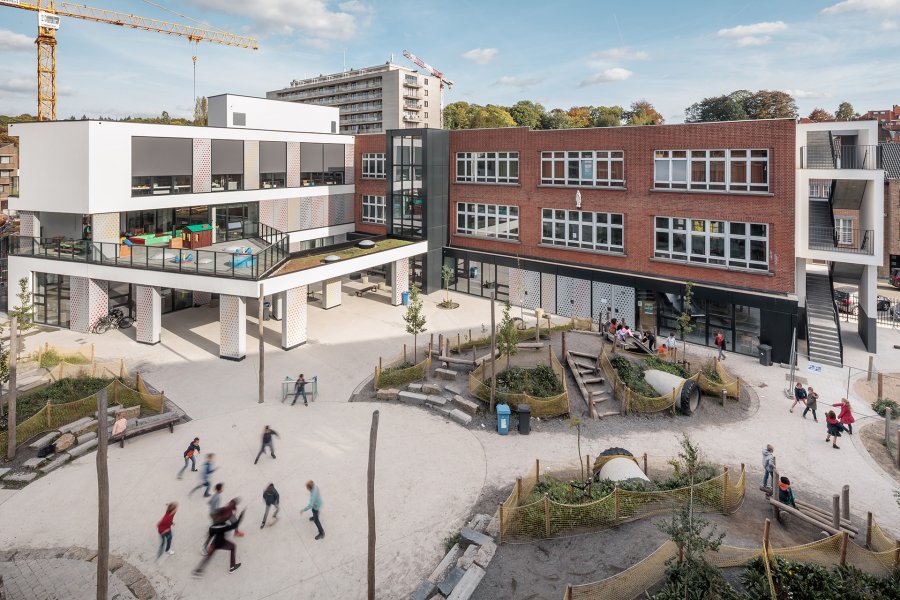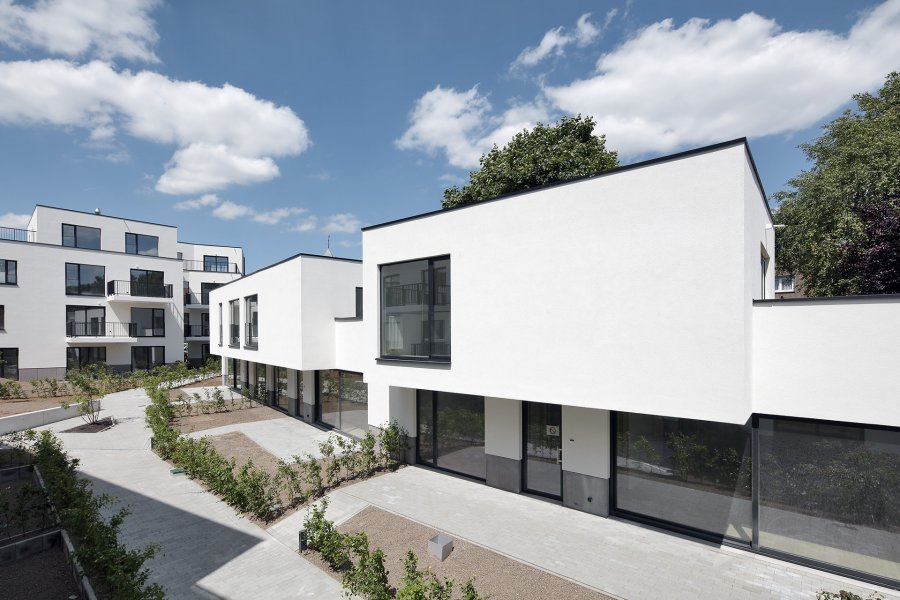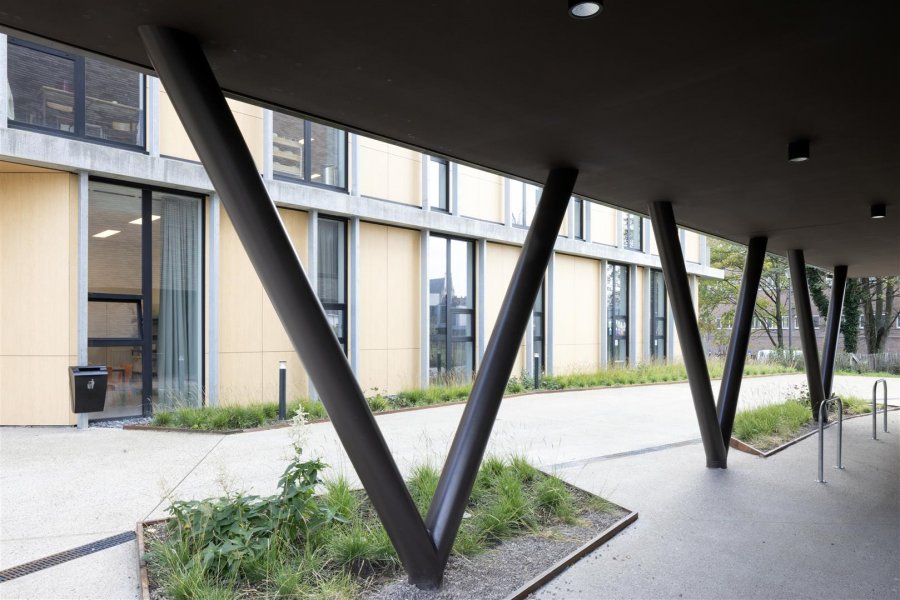This master plan is the result of an urbanistic and financial feasibility study that seeks to provide a sustainable and quality solution to this abandoned school site, taking into account its historic architectural value.
The study comprises, among other things, a feasibility study per built element; the definition of the elements to be razed, renovated or built; the definition of the allocation of the different elements; the study of different scenarios by taking into account heritage aspects as well as sustainability and financial feasibility.
The mission also includes the development of the selected scenario: definition of the surfaces and estimation of the construction, renovation and restoration costs; reduction of the technical risks (by estimating demolition costs, asbestos removal, soil tests, archaeology, etc.); appraisal of the sales price.
The assignment was then prolonged as an architectural mission. In total, eight buildings were renovated and repurposed or constructed. Various buildings were also razed in order to enhance the historic buildings, free up the site and create a public passage through it.
The old cloister was renovated into a multitude of social services and (co-working) office spaces. The attic of this volume was optimized thanks to the insertion of totally independent volumes (‘boxes in the box’), leaving the listed framework untouched.
The volume of the chapel was repurposed as a local social restaurant accessible to the public.
At the centre of the site lies the ‘house of the dukes’, Hertogenhuis. It is home to the oldest cellar in Tienen (dating from the 13th century) as well as to an ‘Open School’ for adults, which brings life to the site in the evenings.
The Art Deco building was transformed into a crèche on the ground floor and a ‘Kind & Gezin’ office on the first floor.
From a volumetric point of view, the new elements fit in perfectly with the existing structures. In terms of architecture, the decision was made to create a clear juxtaposition between old and new. The new buildings are characterized by zinc cladding, glass façades and black aluminium joinery.
The objective of the project is also to develop a wide range of habitats covering different typologies (both renovations and new constructions) while fitting into the existing context in terms of materials and dimensions. So the former school wing is being renovated into ten single-family housing units.
Along the Ooievaarstraat, nine single-family houses and ten apartments are planned in two separate volumes, each built entirely with a wooden frame. This building method makes it possible to have low-impact foundations.
Particular attention has been paid to the exterior design. The entire site has been opened up again to the outside. Mineral and vegetal areas co-exist in harmony and are structured by footpaths that invite passers-by and cyclists to use the site as a public passage.

